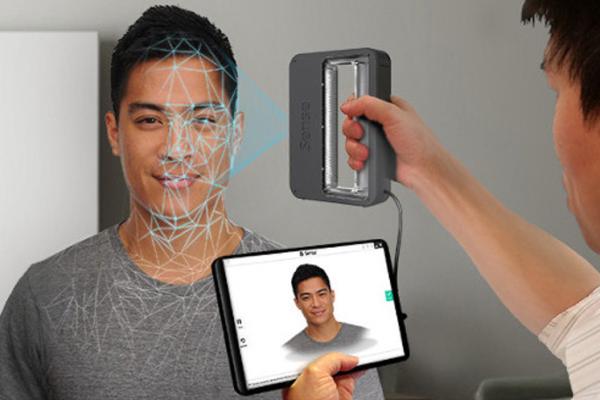Published on the 24/01/2018 | Written by Jonathan Cotton

What’s your mother’s maiden name? Don’t ask…
With 2017 seeming like just one long string of security breaches against consumers, companies and even whole countries – and with the login-process still an enormous pain in the behind – can we just get some innovation happening in identity authentication please? Good news, cynics: The experts think we may finally be on the right track. According to Patrick Harding, identity security expert and CTO with Ping Identity, we’re right on the cusp of finally kissing cumbersome knowledge-based authentication processes goodbye. Harding has offered his predictions for 2018 and says, among other things, that emerging identity proofing solutions that authenticate identity via photos of physical ID are the future and the future is now. “Multi-factor authentication has already been drastically enhanced with the addition of biometrics like fingerprint sensors in devices,” writes Harding in the report, “however, with the introduction of Apple’s iPhone X with the FaceID feature in 2017, facial biometrics officially stole the spotlight. Android is already planning to adopt it widely into its ecosystem.” “The question is if authentication with facial recognition will take off as wildly as it did with fingerprint scanning. This is up for debate in our CTO office, as questions of convenience and prevalence of the feature in the market are discussed. Either way, facial biometrics can’t be ignored.” It sure can’t. In fact, several high profile trials are currently underway and so far, things are looking good. The US Border and Customs agency recently selected its first non-US site to pilot the tech to confirm passenger identities: Aruba’s Queen Beatrix International Airport. Starting last week biometric facial recognition tech is being tested on Auruba-to-JFK Airport flights daily. Similarly, facial recognition tech was rolled out as part of India’s Aadhaar identification system earlier, as part of the government’s ongoing Unique Identification Authority of India project. “This facility is going to help in inclusive authentication of those who are not able to biometrically authenticate due to their worn out fingerprints, old age or hard work conditions,” enthused a statement from UIDAI last week. The rise and rise of facial recognition solutions will likely be facilitated by its intersection with other technologies: Market research firm Goode Intelligence’s 2018 Biometric Industry Predictions says that just as fingerprint sensor technology has moved into the mainstream, biometric processes that use a host of biometric markers – face, iris, voice and behavioral data – will soon be helping mobile, wearable and IoT devices determine just who is who. “2018 will see a number of mobile OEMs emulate Apple with 3D facial recognition systems either replacing fingerprint sensors completely or working as part of a multi-modal biometric authentication system,” says the report. “Heart-rate recognition is an ideal candidate for smart watches and bands. Apple is improving its heart-rate sensor on its Watch to make it more applicable for medical applications. I wouldn’t be surprised if this is adapted for authentication applications making it a perfect companion for vehicle entry – iCar anybody?” iCar indeed – look to the luxury car market for bleeding edge ‘biometrics of things’ tech, with wearable- and smartphone-integrated biometric sensors providing keyless vehicle entry and authentication. “2018 will see biometric technology integrated into luxury vehicles and keyless vehicle entry applications using biometric smart phones start to be deployed,” reads the report. “With connected cars and other IoT devices, authentication is just one application that biometrics enhance. Driver safety and health and wellbeing applications are other applications that biometric technology enables.” Financial institutions will play their part too. With hundreds of millions of bank customers accessing bank accounts, using ATMs and authorising payments every day, 2018 should mark the beginning of a new level of biometric-enabled multi-factor authentication making its way into the fin-services space. And expect enterprise to follow closely behind: “The use of biometrics to support electronic identity and document verification (eIDV) will accelerate during 2018 as it solves a real business need; proving identity for digital channels in a timely manner,” says the Goode report. “Facial recognition is the ideal companion of eIDV as it enables service providers to match a face with a trusted identity document, driver’s licence, passport or national ID card, remotely and in real-time. This is especially crucial for financial services organisations that have to comply with Anti-Money Laundering (AML) and Know-Your-Customer (KYC) legislation.” iStart’s predictions? Expect a few early teething problems, but also expect plenty of enthusiastic adoption as new streamlined zero-login processes become the new norm. … Where access and governance meet… From access to action… More than just cybersecurity… Are buyers looking for AI features? Or is the reverse more true? It’s time for AI to go from low impact to big bang…FURTHER READING

Cyber resilience begins with modern identity security

Identity security key to government efficiency and integrity

Identity security as a business transformer

The evolving role of AI in business technology

Stuff taking AI mainstream



























